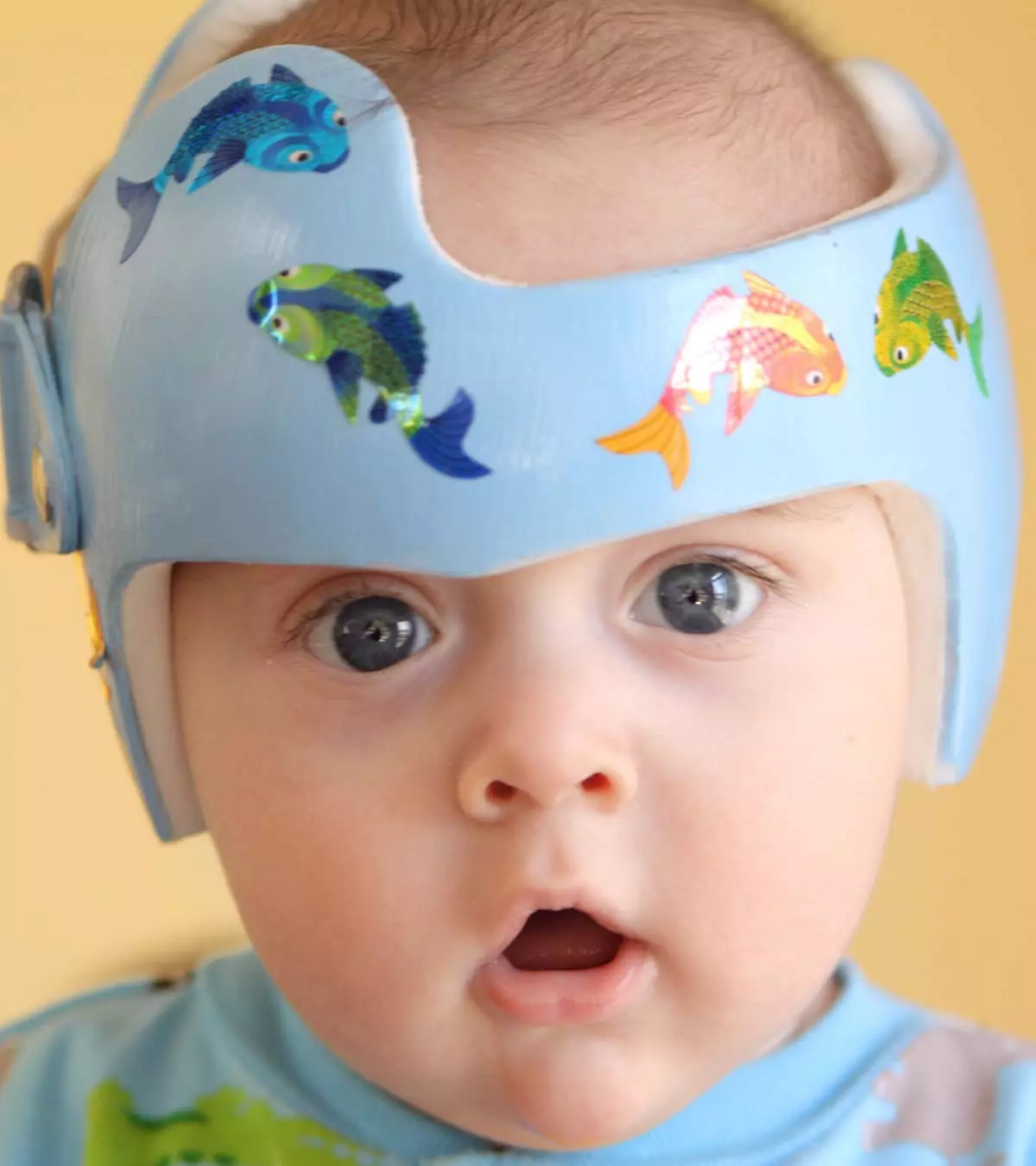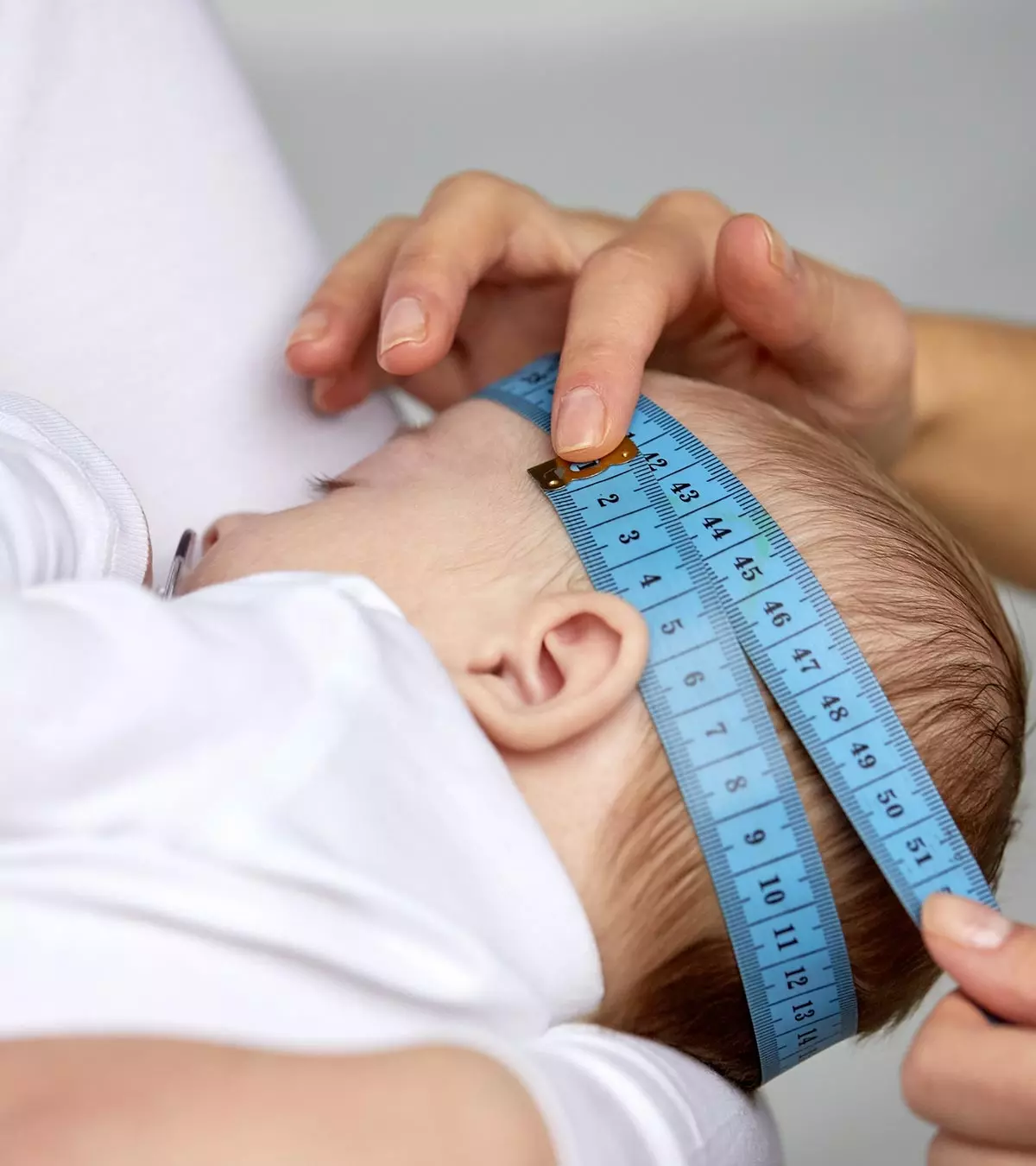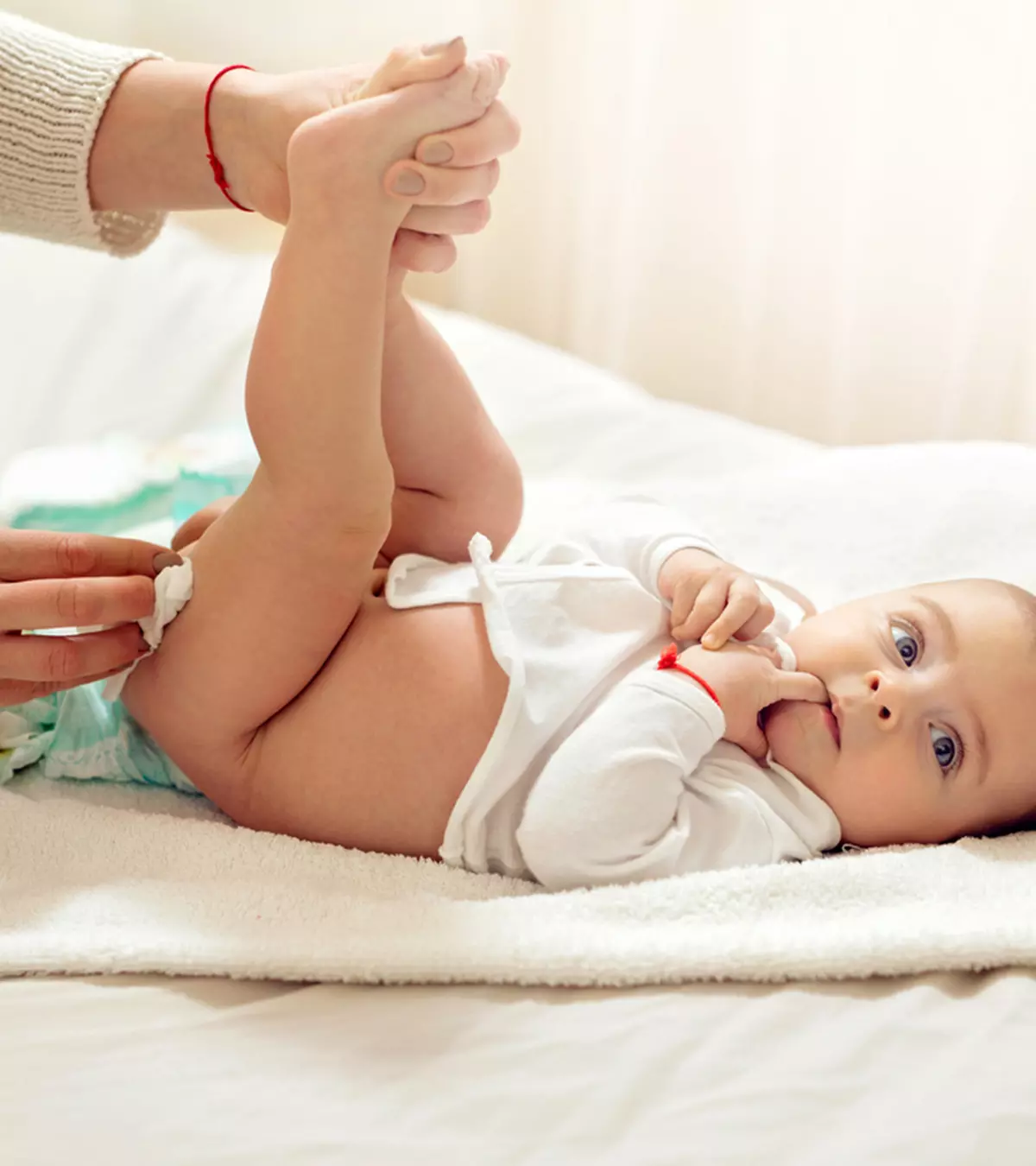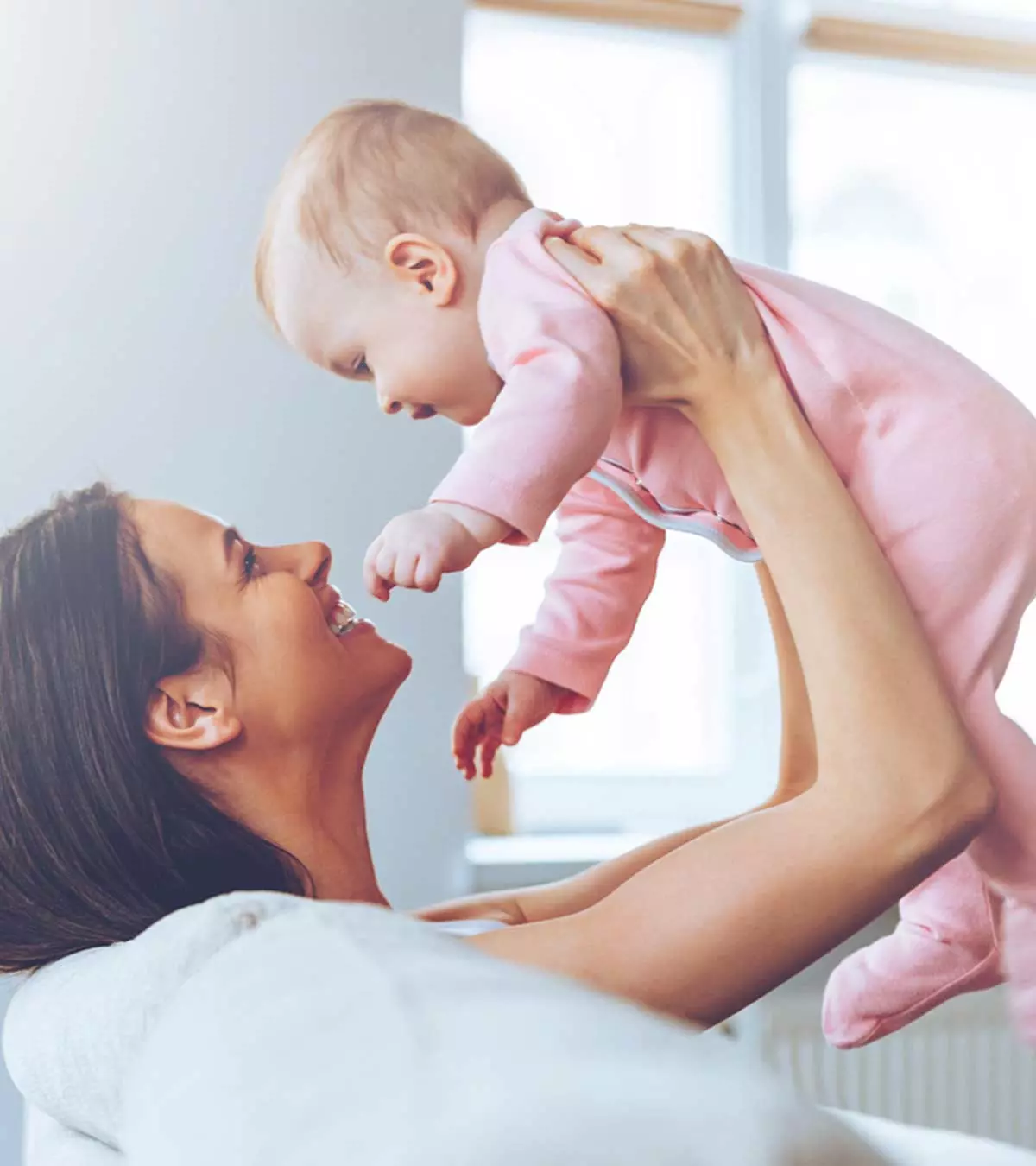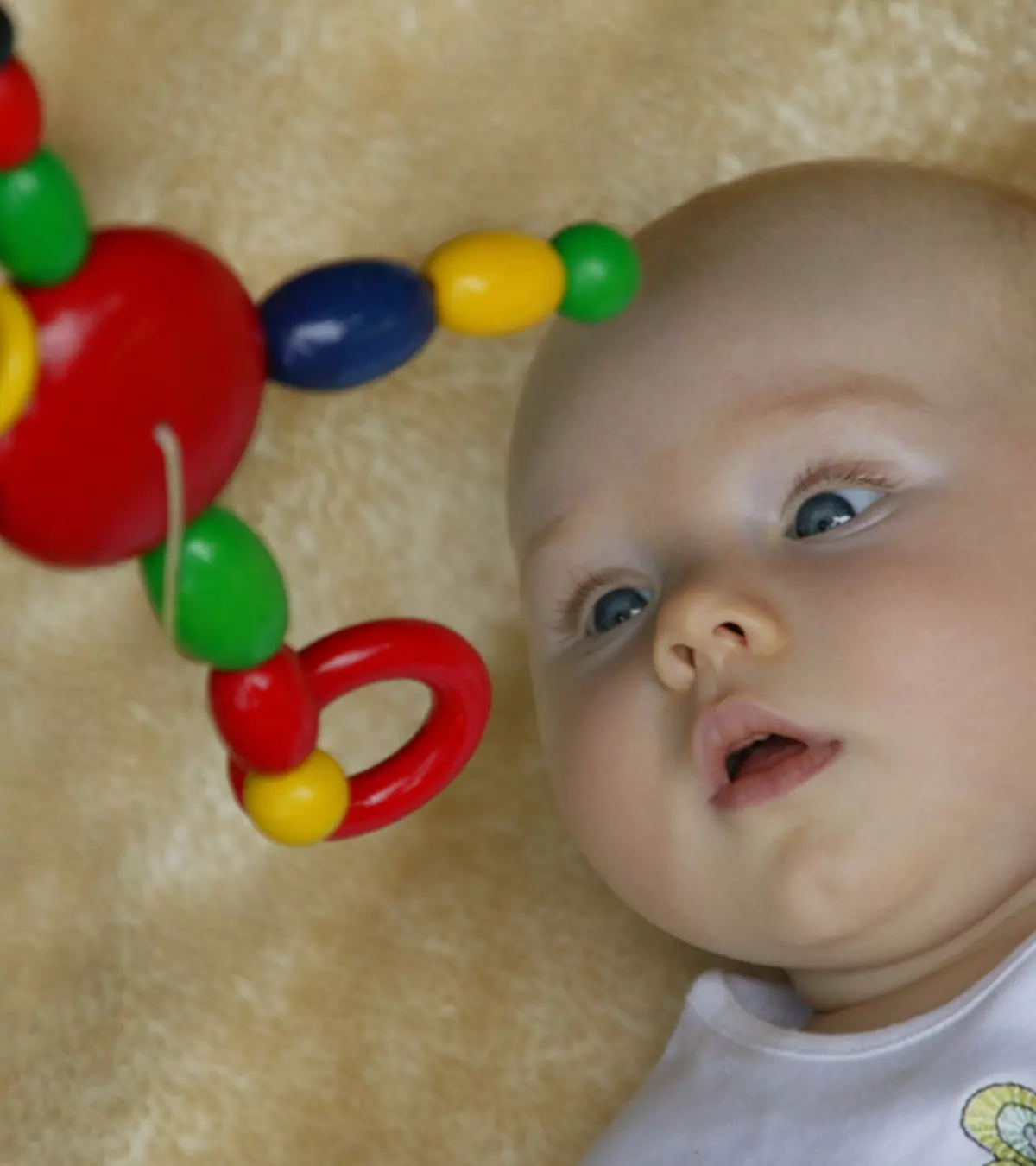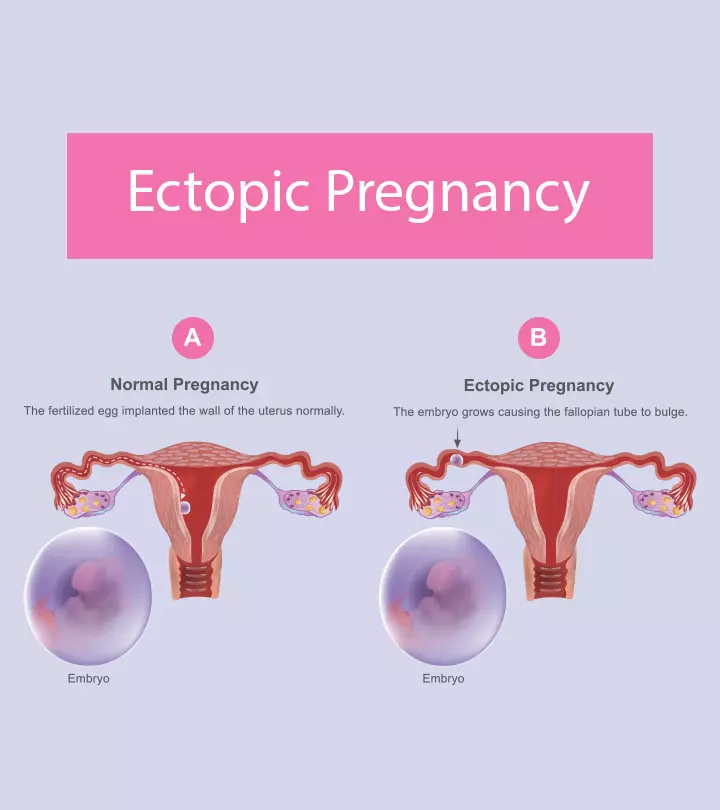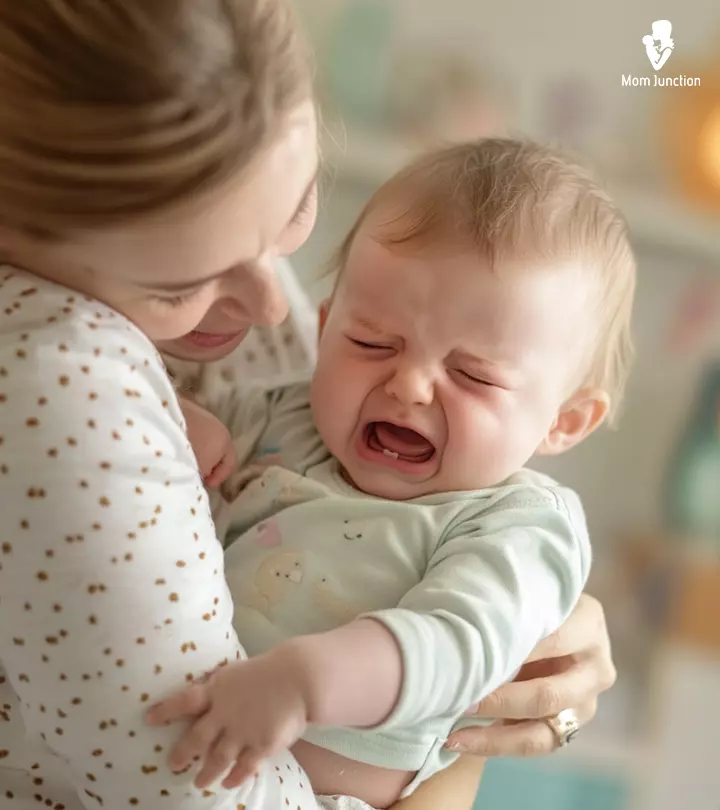
Image: iStock

The parachute reflex is a basic (primitive) postural reaction in infants. It causes a baby standing upright to extend their arms outward and spread their fingers wide (like a parachute) to avoid falling face-first on a flat surface. This gross motor ability appears at five months of age in most full-term, healthy newborns, long before they begin to walk or crawl (1). It then fully develops between eight and nine months.
A fully developed parachute reflex is an important developmental milestone for newborns. Thus, knowing about other important responses like the parachute reflex may help you track your infant’s growth if you have one or are expecting one soon.
This article explains why the parachute reflex is important for babies, how it is tested, and what to do if your baby does not seem to develop early reflexive movements.
Key Pointers
- Parachute reflex in babies is an involuntary reaction to falling.
- Doctors test the parachute reflex in babies with a gentle simulation of a fall.
- The parachute reflex, like the grasp reflex, Moro reflex, and suck reflex, indicate a baby’s healthy development.
- The absence of these reflexes may indicate an underlying neurological condition.
Why Do Infants Develop Parachute Reflex?

Image: Shutterstock
Parachute reflex is an involuntary reaction indicating healthy neuromotor development of an infant (2). Experts suggest that parachute reflex is vital to determine the baby’s ability to react to a stimulus (i.e., a falling position) and prevent injury due to falling.
During routine check-ups, especially around nine months, healthcare providers and doctors check for parachute reflexes in babies to rule out hemiparesis (3). Hemiparesis is a neurological condition where muscle weakening or paralysis occurs on one side of the body (4).
How To Test The Presence Of Parachute Reflex In An Infant?
Most pediatricians and healthcare providers check parachute reflex in healthy, full-term babies using the following steps (5).
- Hold the baby in an upright position by firmly gripping them from their chest. Ensure they are calm and alert.
- Raise the baby upwards and quickly but gently rotate them facing downwards as if they are falling.

Image: Shutterstock
- As the baby rotates, note their response. The baby should extend their arms forward and spread fingers to prevent a fall.
In most full-term babies, healthy babies, the reflex develops entirely by 12 months of age and then stays indefinitely.
Other Primitive Reflexes
There are some more essential reflexes that mark the healthy overall development of a baby (6).
- Rooting reflex: If you stroke a baby’s cheek or touch the corner of its mouth, they will turn its head towards that direction. This reflex allows the baby to locate the mother’s breast or a bottle and begin feeding. This reflex is present at birth and disappears by four months of age. The reflex disappears by four months of age.
- Suck reflex: It is a survival reflex that manifests around the 32nd week of the pregnancy and fully develops by the 36th week. It prepares the baby to suck as soon as the mouth’s roof or palate is touched. Babies gradually fine-tune this reflex with the rooting reflex, letting them use this combination reflex to suck on the pacifier, hand, or fingers to self-soothe.
- Moro reflex: It appears in babies when they are just a few weeks old and then disappears by two months. In this reflex, the baby arches their back, throws out their arms and legs, rapidly brings their arms together, and cries in response to a sudden movement or loud noise. It is a startle response which is why the reflex is also known as the startle reflex.
- Tonic neck reflex: In this reflex, when a baby’s head turns to one side, the arm to that side straightens, and the opposite arm bends at the elbow as if the baby is fencing. It is the reason this reflex is also known as fencing posture, which abates once the baby is between five and seven months of age.
- Grasp reflex: It is an essential reflex wherein a stroke or a touch on the baby’s palm causes them to close their fingers, forming a fist. This reflex allows the baby to grasp things or objects. The reflex wanes once the baby is around five to six months old. The plantar grasp is when you stroke the sole of the baby’s foot, and her toes curl tightly. It may persist up to 12 months (7).
- Stepping reflex: Also known as dance or walking reflex, this reflex makes a baby step as if they are walking when held in an upright position and their sole touches a flat surface. The reflex is present at birth and disappears by two months of age and returns around 12 months as a voluntary action, called walking.
- Snout reflex: It is seen when the upper lip is tapped lightly. The muscles surrounding the mouth contract resembling a snout (7).
- Galant reflex (Truncal incurvation): It occurs when the side of a baby’s spine is stroked while she lies face down. The baby will twitch her hips toward the side touched in a dancing movement (8).

Image: Shutterstock
These automatic responses in babies together prepare them to survive in the world outside the mother’s womb and learn different skills to act voluntarily.
 Things to know
Things to knowWhat If One Or More Reflexes Are Absent In A Baby?
Reflexes mark developmental milestones. As babies grow and develop at different rates, some delay may occur in the maturation of reflexes which is usually normal. However, a partial or complete absence of one or more reflexive behaviors in infants could indicate an underlying neurological or motor growth and developmental issue.
For instance, a partial or complete absence of the sucking reflex may indicate brain damage and/or a syndrome that could affect the overall growth and development (9). Similarly, the presence of a reflex long after the time it should disappear indicates a brain or nervous system problem (10).
 Did you know?
Did you know?Frequently Asked Questions
1. How important are infant reflexes?
Reflexes in an infant are a sign of a developing and well–functioning nervous system. Newborn reflexes such as the rooting and the suck reflex help them thrive, while the stepping reflex enables them to walk as they grow older. All primitive reflexes help babies achieve important milestones as they grow older (8).
2. What happens if primitive reflexes don’t go away?
Primitive reflexes retained beyond the normal period can hamper the child’s healthy physical and social development. It may adversely affect the child’s psychomotor development since retained primitive reflexes could indicate central nervous system problems (11).
Parachute reflex happens to be an action that comes from involuntary motor reactions and protective reflexes essential for babies to develop. The presence of a parachute reflex lets a baby prevent falls, and the absence of this reflex may indicate a neuromotor issue that requires attention. However, if you have already noticed that your baby lacks certain developmental reflexes, you must consult their pediatrician at the earliest to reach a solution. The doctor will be able to evaluate your baby’s condition in detail, learn the cause, and suggest an appropriate treatment method.
Infographic: What Are The Various Primitive Reflexes In A Newborn?
It’s only normal for parents to be anxious about their newborn’s growth and development. Knowing and understanding the essential primitive reflexes of a newborn is a critical step in ensuring their healthy growth. The infographic below lists various reflexes in babies right from birth. Have a look!
Some thing wrong with infographic shortcode. please verify shortcode syntaxReferences
1. Developmental milestones; University Of Washington
2. Domenico MM Romeo et al.; Development of the forward parachute reaction and the age of walking in near term infants: a longitudinal observational study; NCBI
3. Infancy 0-11 months; Bright Futures
4. Hemiplegia; Children’s Hemiplegia And Stroke Association
5. Neurologic Examination for Pediatrics; The University of Utah School of Medicine
6. Newborn Reflexes; AAP
7. The Suck, Snout, Palmomental, and Grasp Reflexes; NCBI
8. Infant Reflexes; Medline Plus
9. Primitive Reflexes; NCBI
10. Infant reflexes; Mount Sinai
11. Ewa Z. Gieysztor, et al.; Persistence of primitive reflexes and associated motor problems in healthy preschool children; National Library of Medicine
12. Newborn Reflexes; Children’s Hospital of Philadelphia
Community Experiences
Join the conversation and become a part of our nurturing community! Share your stories, experiences, and insights to connect with fellow parents.
Read full bio of Dr. Misha Yajnik
Read full bio of Swati Patwal
Read full bio of Rohit Garoo
Read full bio of Vidya Tadapatri







